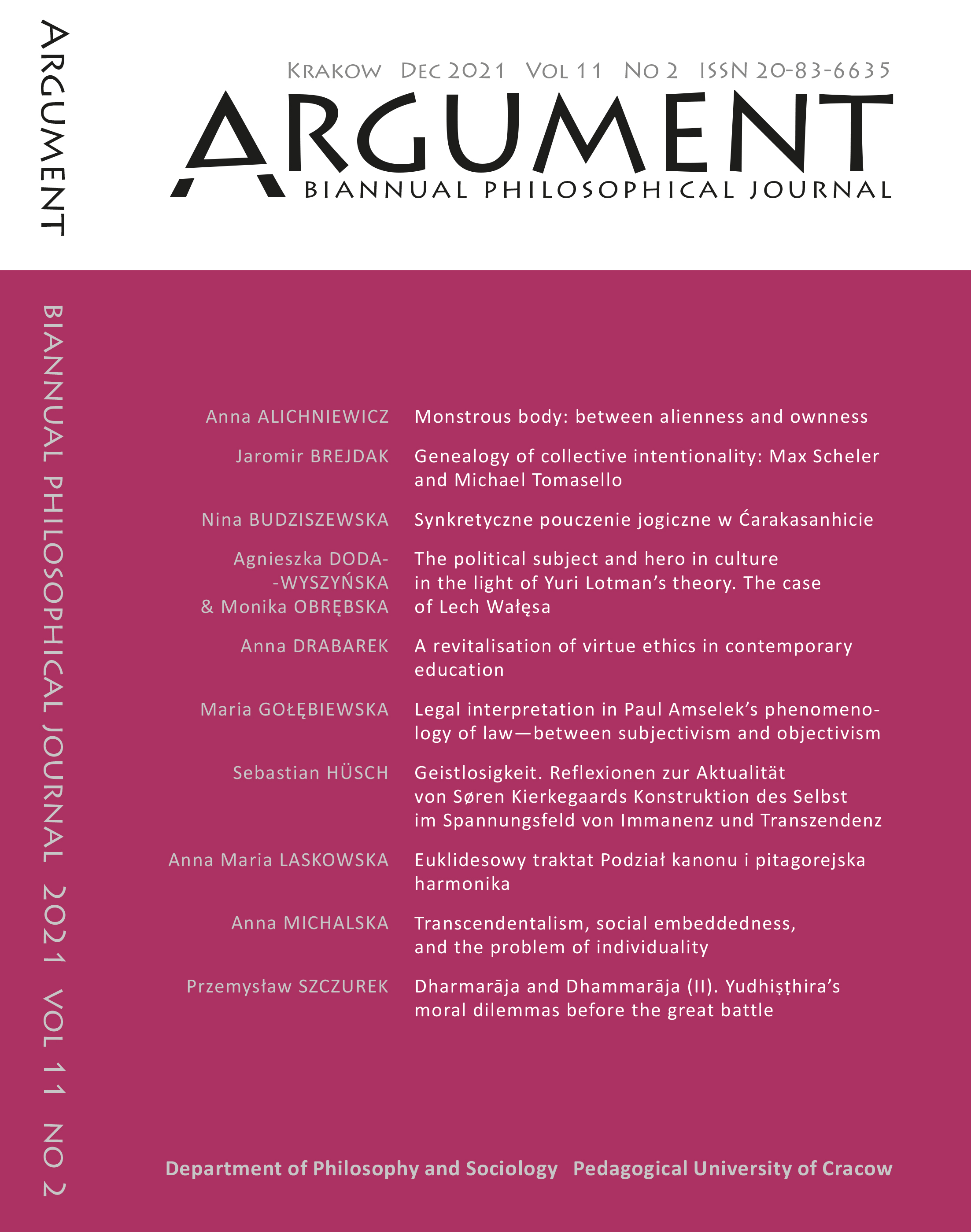Euklidesowy traktat Podział kanonu i pitagorejska harmonika
DOI:
https://doi.org/10.24917/20841043.11.2.10Keywords:
theory of proportions; Aristoxenus; Pythagoras; consonans; monochord; mathematics; musicAbstract
The Euclidean ‘Division of the canon’ and Pythagorean harmonics: The article presents the first Polish translation of a short Ancient Greek treatise entitled The division of the canon, which is commonly dated to the 3rd century BC, with a doubtful assumption that the author of the treatise is Euclid himself. It is the oldest surviving text derived from the mathematical school of harmonics, which combined the mathematical theory of proportion with the musical laws of harmony. The main purpose of this Euclidean treatise is to describe the instrument called canon (or monochord), which consists in determining the successive notes of the Greek musical system by means of mathematical principles. The treatise essentially consists of two distinct parts: an introduction and twenty propositions in the style of Euclid’s Elements. To bring this highly esoteric text closer to the modern reader, the translation is preceded by a brief introduction, which deals with the basic issues of the transmission of the text, its structure, and the problem of authorship. The philosophical problems of the treatise and its basic concepts are also discussed. An underlying idea of both the introduction and the work on the translation is that The division of the canon is an eminently Pythagorean text, which both expressed and proved their conviction about the mathematical structure of the universe.


